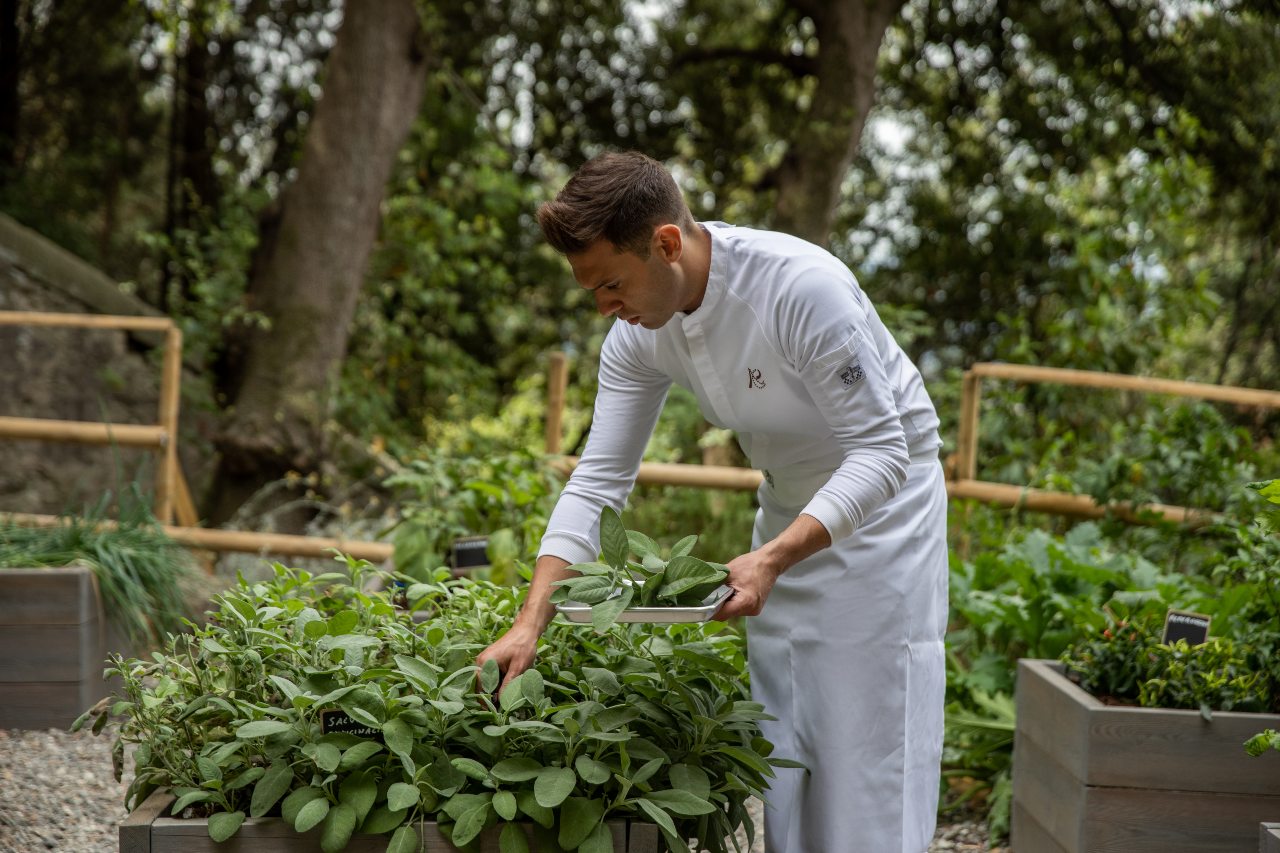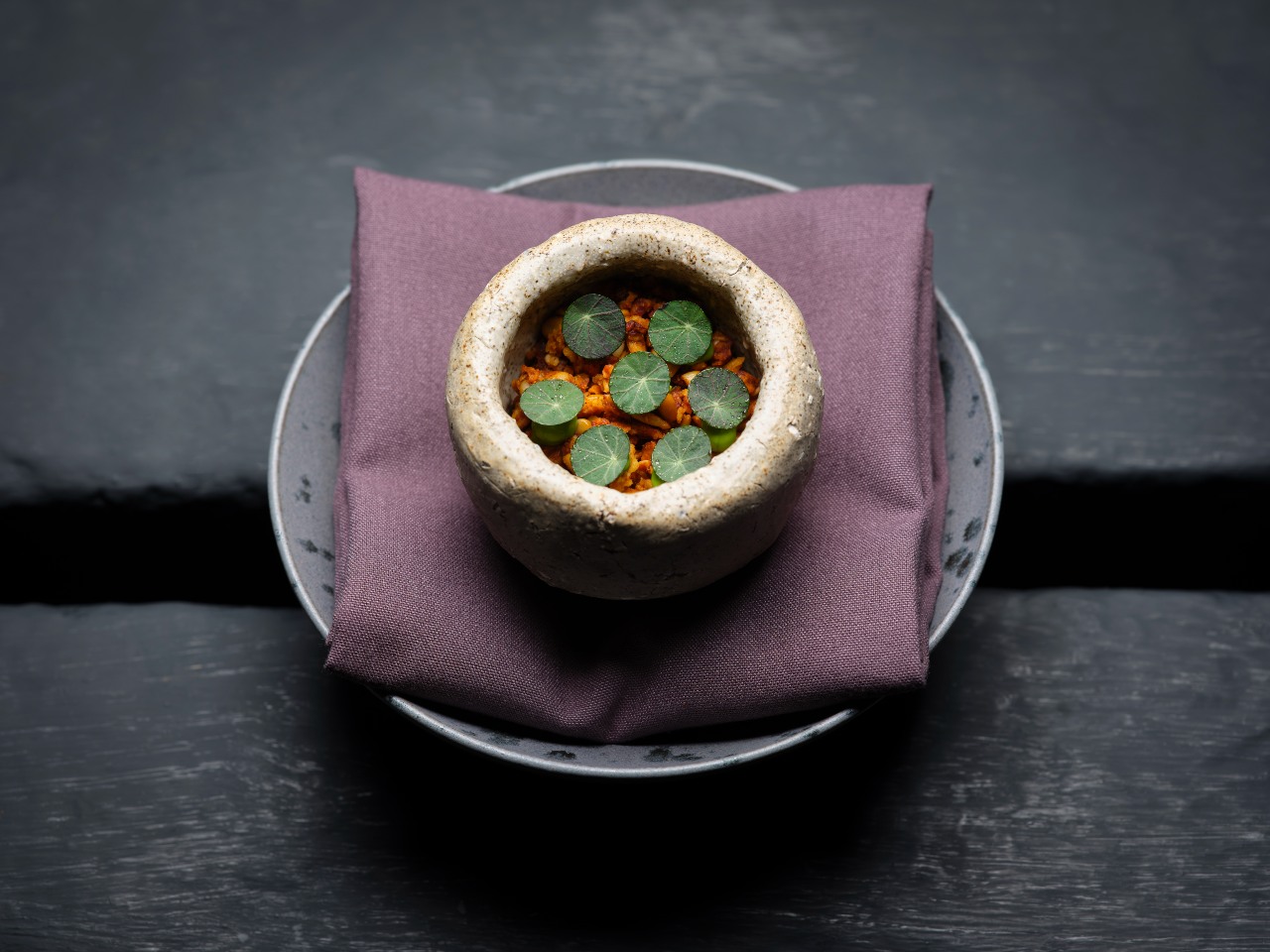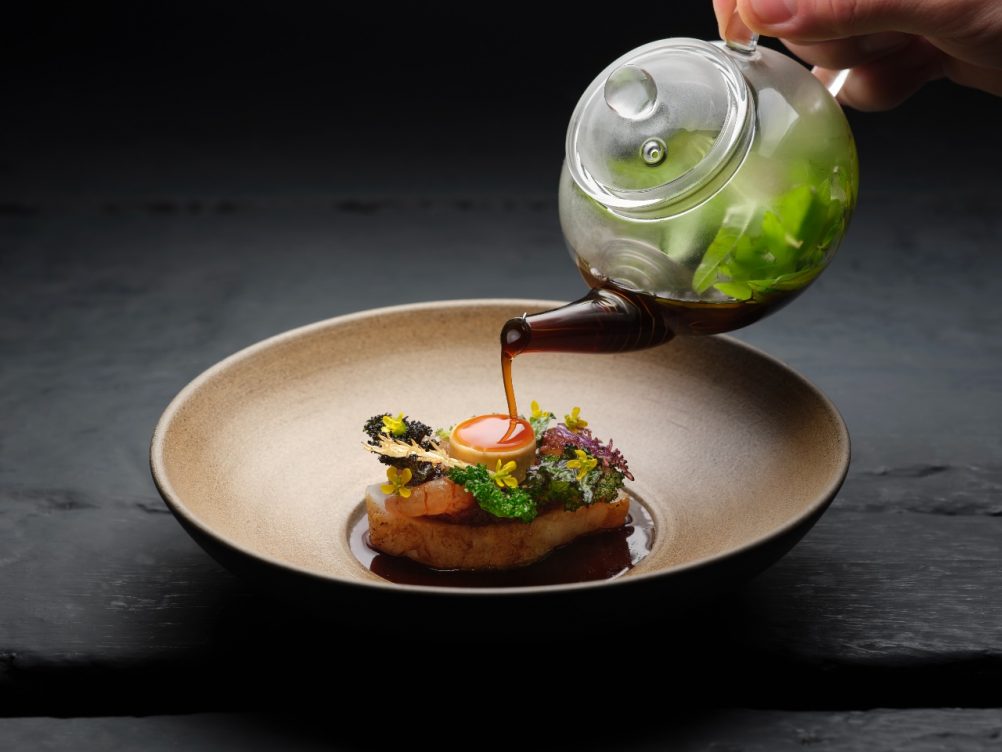Michelin’s green stars: what you need to know
Why the sustainability award is so controversial.
Words by Ute Junker
Photos supplied
Only in Berlin. It’s a phrase that usually refers to the city’s notoriously wild nightclubs but it also applies to dinner at Nobelhart & Schmutzig. At this compact restaurant – it hosts just 40 diners, most of whom pull up a seat at the counter – every ingredient used in the 10-course meal is sourced from within 120km of Berlin.
Not only that, but chef Micha Schäfer only uses produce that grows in this climate. That means doing without exotic ingredients such as mango and cinnamon, but also essentials such as black pepper. Working within these parameters doesn’t hinder Schäfer’s creativity: dishes such as venison tartare with juniper oil, or braised cucumbers cut into spaghetti-like strands and served with dill and onion, have seen Nobelhart & Schmutzig anointed with a Michelin star.
The restaurant has also scored a green star, an award introduced by Michelin in 2020 to showcase restaurants putting sustainability at the forefront of their operations. Nobelhart & Schmutzig was among the first to score the award, in recognition of the work it does to help elevate local producers and growers.
After the awards were launched, chefs around the world put up their hands to be selected. Almost 450 restaurants now hold green stars for which there are no set criteria. According to the Michelin website, “Every Green Star restaurant is different and works in its own unique way – but all make a difference to the world around them and act as role models to us all.”

A quick scroll through the site reveals a range of approaches. In London, Silo restaurant has a zero-waste ethos, with everything from the furniture to the plates made of recycled materials, while staff at Kyoto’s Muromachi Wakuden participate in forest regeneration projects and even help out with planting and harvesting the rice used in the restaurant.
In California’s Sonoma Valley, Single Thread grows 70 per cent of the produce served in its LEED certified dining room on its own organic farm, while the team from Novel in the Danish town of Aarhus works with a scientific advisory group from the local university to study the sustainability of ingredients in order to leave a positive climate footprint.
Most chefs are proud of their green stars. “We didn’t have green stars in mind when we set off on our journey to create sustainability practices, but we are very very pleased to have them. They are a good way to encourage people to follow that path,” says English chef Simon Rogan, who has scored green stars for not one but two restaurants: L’Enclume in England (which also has three Michelin stars) and the one-star Roganic in Hong Kong.
The team at Nobelhart & Schmutzig, however, feels differently. Not only do they not advertise their green star; co-owner Billy Wagner dismisses the award as counter-productive, because Michelin has no system for verifying restaurants’ claims about their operations.
“It’s very dangerous,” Wagner says, pointing out that if one restaurant is outed as not living up to its claims, it will render every other restaurant suspect.
“The green star brings amazing possibilities for the whole industry to have something to talk about,” he says. “It makes me sad that the chance is not being used as it could be.”

Even before the green star was introduced, many of the world’s leading chefs were grappling with issues that affect the health of the planet, including everything from food waste to regenerative farming. Far less attention has been paid to another equally important aspect of dining – how what we eat affects our own health.
One chef who is firmly focused on the issue is Alessandro Cozzolino. The executive chef at Florence’s beautiful La Loggia at Villa San Michele hotel, Cozzolino considers more than just taste and texture when constructing his menus – he also focuses on the food’s nutritional content. That means evaluating proteins for factors including digestibility and essential amino acids.
One dish that exemplifies his approach is la carabaccia, a crêpe with seasonal black truffle, Certaldo onions, quinoa, and seasonal mushrooms.
“It brings together a range of cereals and legumes, it is a totally healthy, totally vegan dish but the flavours are [as rich] as eating meat,” Cozzolino says.
Nutrition isn’t the only issue moving into the spotlight. Nobelhart & Schmutzig has just released a Guide of Conduct to address many of the behind-the-scenes issues dogging the restaurant industry. Wagner says the aim is nothing less than “changing… everything that was going wrong, whether it is overworking people, underpaying them, toxic male work environments, or simply that it is hard to have a family life if you work in restaurants.”
The guide covers everything from communicating respectfully to dealing with sexual harassment and discrimination, drawing on best practice from a range of other industries.
“Our work is more than just roasting a piece of meat or opening a bottle. We have responsibility for what happens in the restaurant,” Wagner says. “We still believe that gastronomy offers a wealth of fascinating opportunities, but we need to step up, offer people better conditions, and then deliver on those promises, every single day.”



